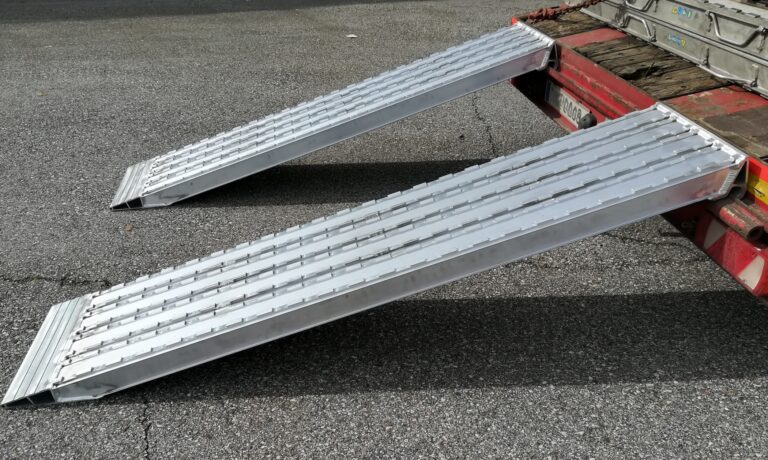Aluminum loading ramps are indispensable in various settings, bridging the gap between ground and vehicle for efficient loading and unloading. Their relevance spans across vehicle transportation to heavy industrial applications, making them a versatile tool in numerous sectors. This blog post delves into the practical aspects of using aluminum loading ramps. It aims to equip readers with essential tips, ensuring they can utilize these effectively and safely, whether in a commercial, industrial, or personal context.
Types of Aluminum Loading Ramps
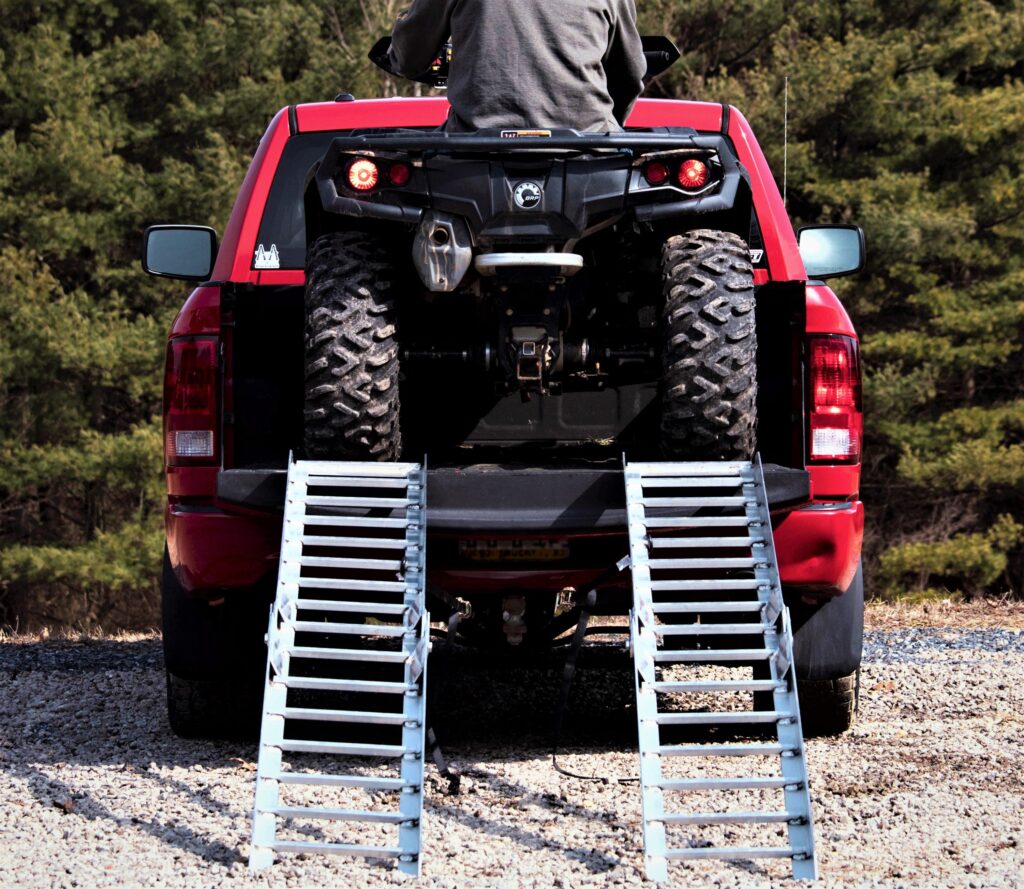
The market offers a diverse range of aluminum loading ramps, each designed to meet specific needs. Portable models like SureWeld aluminium loading ramps are lightweight and easy to transport, making them ideal for temporary or mobile applications. Stationary ones, often found in warehouses and industrial sites, provide a permanent solution for heavy-duty loading. Folding ramps offer the best of both worlds – they are movable and space-efficient, perfect for those with limited storage space. Understanding these variations is crucial in selecting the right ramp for your specific application, whether it’s for a small business, a large industrial operation, or personal use.
Weight Capacity and Size Selection
Choosing the correct aluminum ramp is a balance between weight capacity and size. It’s essential to select a ramp that can handle the weight of your equipment without buckling. The ramp’s size, including its length and width, should accommodate the dimensions of the vehicles or machinery being used. The load angle, determined by the ramp’s length and height, is also a critical factor. A gentler angle is safer and easier for loading, but it requires a longer ramp. This selection process is vital to ensure safety and efficiency in your operations, whether you’re loading a small ATV or heavy industrial machinery.
Safety Precautions
Prioritizing safety when using aluminum loading ramps cannot be overstated. The first step is to secure everything properly to the loading surface, preventing any movement during use. Ramps should have anti-slip surfaces and adequate traction to ensure stability under all weather conditions. It’s also important to adhere strictly to the manufacturer’s guidelines regarding weight limits and usage. Regular inspections for any signs of wear or damage can prevent accidents. These safety measures are crucial not only for the protection of the equipment but also for the operators and bystanders.
Vehicle Loading and Unloading
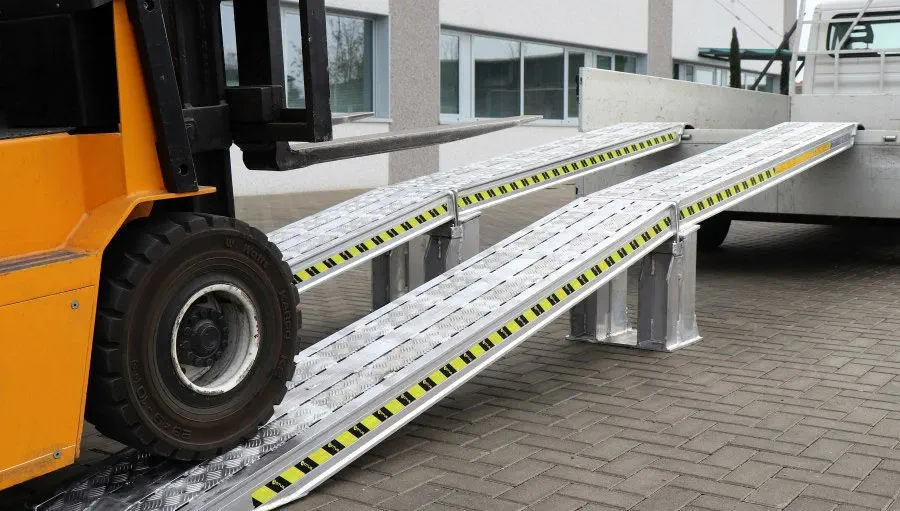
Loading and unloading vehicles using aluminum ramps requires careful planning and execution. The ramps must be correctly positioned and aligned with the vehicle to ensure a smooth transition. The vehicle should be centered on the ramps to maintain balance and prevent tipping. It’s also important to check that the vehicle’s tires are properly inflated and the brakes are functioning correctly before beginning the loading process. These steps help in avoiding accidents and ensure a safe and efficient loading or unloading process, whether you’re dealing with small recreational vehicles or larger commercial equipment.
Industrial Applications
In industrial settings, aluminum ramps are invaluable for their strength and durability. They are commonly used for loading forklifts, pallet jacks, and heavy machinery onto trucks or platforms. These facilitate the movement of goods in warehouses, construction sites, and manufacturing plants, enhancing operational efficiency. Their lightweight yet sturdy construction allows for easy maneuverability and setup, which is essential in fast-paced industrial environments. By improving the ease of loading and unloading heavy equipment, these ramps not only save time but also reduce the physical strain on workers, contributing to a safer workplace.
Maintenance and Longevity
To ensure the longevity of aluminum loading ramps, regular maintenance is key. This includes routine cleaning to remove debris and corrosive materials, which can weaken the ramp over time. Regular inspections for cracks, bending, or other signs of wear are crucial. Addressing minor repairs promptly can prevent more significant issues down the line. Lubricating any moving parts, such as hinges on folding ramps, will keep them functioning smoothly. Proper maintenance not only extends the life of the ramps but also ensures they remain safe and reliable for every use.
Proper Storage
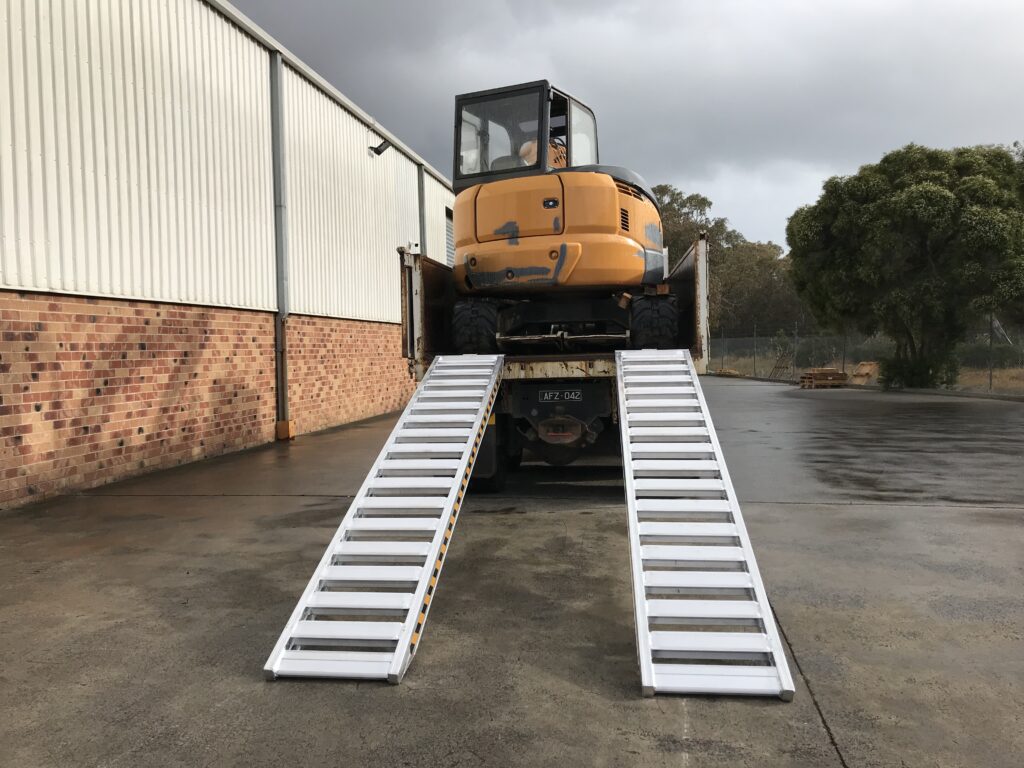
Storing aluminum loading ramps correctly is essential to maintain their condition and functionality. When not in use, they should be stored in a dry, covered area to prevent weather-related damage. For folding or portable models, consider space-saving storage solutions like wall mounts or under-vehicle brackets. Proper storage prevents accidental damage and ensures the ramps are ready for use when needed, whether stored in a commercial warehouse or a personal garage.
Regulations and Compliance
Understanding and complying with relevant regulations and safety standards is crucial when using aluminum loading ramps. These regulations ensure that they meet specific safety criteria, reducing the risk of accidents. In both vehicle and industrial contexts, adherence to these standards is not only a legal requirement but also a best practice for safe operations. Users should stay informed about the latest regulations and ensure their equipment is up to date. This compliance is essential for protecting workers, equipment, and the business as a whole.
Loading Ramp Accessories
Enhancing aluminum loading ramps with the right accessories can significantly improve their functionality and safety. Safety straps, for instance, secure the ramps to the vehicle, preventing slippage. Edge protectors can minimize wear and tear, extending the ramp’s lifespan. Carrying cases for portable models make transportation and storage more convenient. Investing in these accessories is a small but critical step in ensuring safer and more efficient use of loading ramps in various settings.
Case Studies and Real-World Examples
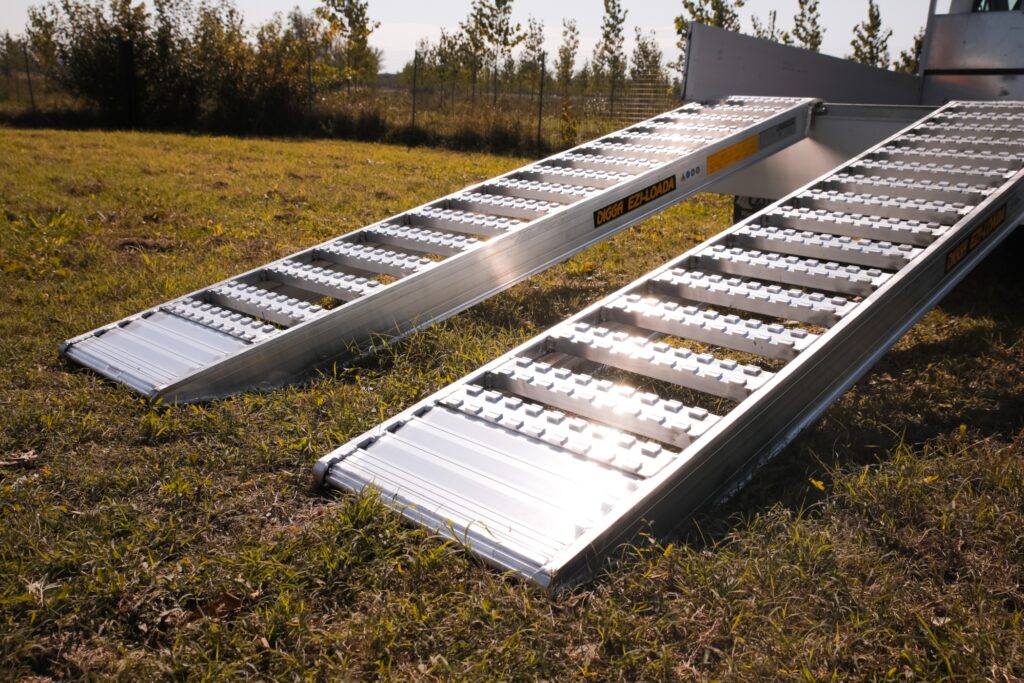
Real-world examples and case studies highlight the practical advantages of aluminum loading ramps. Businesses that have integrated these into their operations often report increased efficiency and safety. For instance, a logistics company may find that using aluminum ramps for truck loading cuts down on loading time and reduces worker fatigue. These success stories provide valuable insights into how different industries can effectively utilize aluminum ramps to enhance their operations.
Conclusion
Aluminum loading ramps are versatile tools that play a crucial role in vehicle and industrial applications. By selecting the right type, adhering to safety precautions, and ensuring proper maintenance and storage, these ramps can significantly improve operational efficiency and safety. Remember, the key to successful use lies in understanding your specific needs and complying with safety standards. Whether for personal use or in a commercial setting, applying these practical tips will help you make the most of your aluminum loading ramps.

